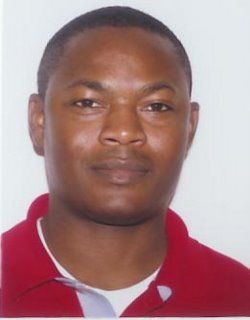Revolutionizing learning in the Digital Age
Education, information and computers are synonymous. A separation of one from the other will not be a wise thing to do. Focusing on one or two and leaving out the other can be interference in a marriage ultimately causing a lasting damage. Revolutionizing learning in the digital age requires digital equity. The product of this will be individuals that are not just consumers of information but are also producers. In an ecosystem, the rule requires a symbiotic relationship. If we all want to consume what someone produced and find no need in giving back in anyway, eventually the symbiotic relationship will be broken and the habitat is destroyed. Learning is a two way communication link. Ability to think, collaborate, social learning and the constructivist approach are fundamental building blocks in our revolutionizing of learning in this digital age.
We have to move past the idea of looking at computers as just an information machine. We have to see it as a tool for constructing knowledge, like finger paint, it should be used to design and create things (Resnick, 1998). Our homework in my TBTE 406 class is no doubt perfect examples of knowledge creation and creativity. It enables individuals to apply and create something of significance and ultimately equip us for a career in teaching and learning effectively. We are able to use computers as a material for making a variety of things from videos to instructional materials. We are been thought not just how to use computer technology but how to construct something significant with computer, thereby fluency with computers.
The digital divide in our society and many others is bound to come to an end with the cost of computers on a decline, and then there will be no more excuses as to why someone is dormant and unable to create knowledge. Jobs in the horizon are continuously looking for 21st century skills in potential candidates. Are you going to be ready, fully equipped for every good work, competent and ashamed of nothing? Now is the time to work on shortening the access gap and also shrink the fluency gap that is currently inherent in digital divide (Resnick, 1998). Computers have proven very useful in transforming somewhat theoretical and not easily understood ideas to concepts mastery and understanding.
We will generate wealth, enhance health, and maintain peace locally and worldwide if we improve education (Resnick, 2001). The mastery of digital technology and its application builds self confidence and creativity. For every passing day and night, a lot will be learned by applying self and developing one’s own philosophy and ideas about teaching and learning. In helping kids to learn, we do well to redesign computers targeted to them rather than continuously increasing computer’s speed. This will ensure their personal interactivity with technology, will encourage lifelong learning and learning anywhere at anytime. Learning from group projects involving differing age groups is an excellent way to social learn. The benefits are enormous and very rewarding as they learn from one another. We need to breakdown the walls of classrooms in support of lifelong learning. The creativity embedded in our childhood should be explored, nourished, refined, and developed so that it grows throughout life. New approaches to education and learning, and new technology will help to achieve these goals (Resnick, 2001).
References:
Resnick, M. et al. (1998). The Computer Clubhouse: Technological Fluency in the Inner City” in High Technology and Low-Income Communities, Mitchell (Cambridge: MIT Press, 1998, pp. 266–286); Retrieved November 13, 2006 from: http://web.media.mit.edu/mres/papers/Clubhouse/Clubhouse.htm
Resnick, M. (2001). Revolutionizing learning in the digital age. Retrieved November 13, 2006 from: http://www.educause.edu/ir/library/pdf/ffpiu014.pdf

